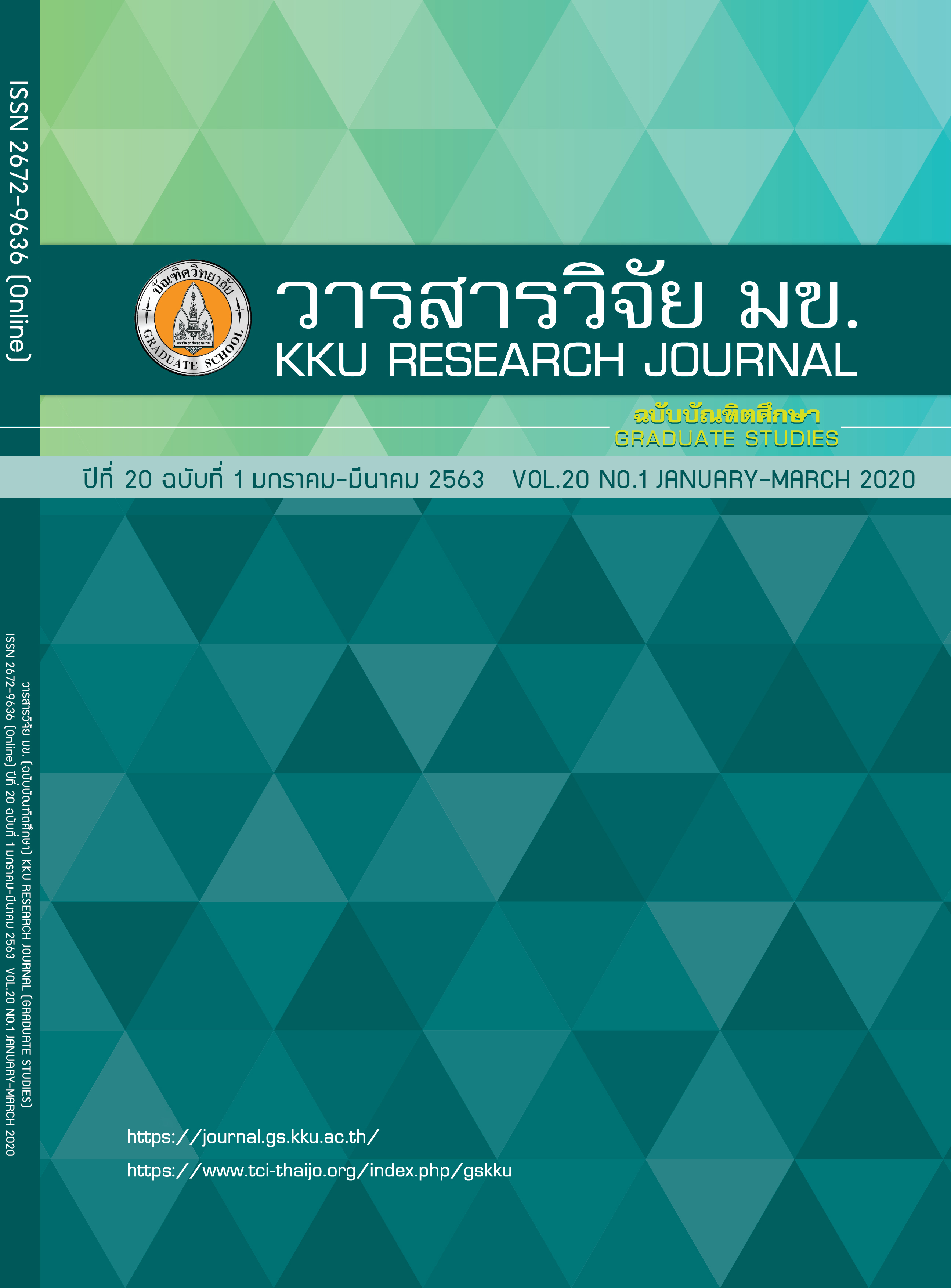Development of Maximum Capacity Cation Exchange Resin in Polyvalent Form for Water Softening Process
Keywords:
Bed Volumes (BV), Resin, Equivalent/Liter (eq/L), Hard water, Ion ExchangeAbstract
The objective of this research aimed to develop environmental friendly with maximum capacity of cation exchange resin, operated in polyvalent form for water softening process. The comparison efficiency of regenerants by using NaCl, HCl, FeCl36H2O were investigated. The result found that at 100% of calcium recovery, 9.5X of H+, 3.8X of Na+, and 1.5X of Fe3+ were used to regenerate exhausted resins. According to the resin selectivity, the polyvalent Fe3+ can be effectively used as regenerants compared to monovalent Na+ or H+. The comparison efficiency of hardness removal by using resin polyvalent form (Al-form, Fe-form, Zr-form) found that resin polyvalent form can remove hardness at approximately 420-510 bed volumes corresponding to the maximum exchange capacity. The traditional Na+-form requires 2.14X resin to achieve 1.6 eq/L ion exchange capacity, while Fe3+-form, Al3+-form and Zr4+-form require only 1.5X to achieve 1.8, 1.68, 2.04 eq/L ion exchange capacity, respectively. The results suggested that the resin in a polyvalent form is suitable for water softening system.
References
Ahn M, Chilakala R, Han C, Thenepalli T. Removal of Hardness from Water Samples by a Carbonation Process with a Closed Pressure Reactor. Water. 2018;10(1):54. PubMed PMID: doi:10.3390/w10010054.
Forghani F, Park JH, Oh DH. Effect of water hardness on the production and microbicidal efficacy of slightly acidic electrolyzed water. Food microbiology. 2015 Jun;48:28-34. PubMed PMID: 25790988.
Johan Schaep BVdB, Steven Uytterhoeven, Raf Croux, Carlo Vandecasteele, Dirk Wilms, Emmanuel Van Houtte, Frans Vanlerberghe. Removal of hardness from groundwater by nanofiltration. Desalination. 1998.
Ali W, Zehra DA, Ali Z, Naqvi B. Plant Science Journal Effect of salinization and alkalization on seed germination and early seedling growth of leguminous species Vigna mungo L2017. 1-11 p.
Limaporn N. Development of water softening process using cation exchange resin operated in ferric (Fe3+) form [MSc thesis]: Khon Kaen University; 2016. Thai.
Edzwald JK. water quality treatment a hand book on drinking water. Edition S, editor2011.
A New Family of resin [Internet] 2008 [updated MAR 27, 2008; cited 2019 Feb 20] Available from: https://www.wqpmag.com/new-family-resins.
Mackenzie L, Davis PD, BCEE PE. water and wastewater engineering design pricipels and practice2010.
Smith RC, SenGupta AK. Integrating tunable anion exchange with reverse osmosis for enhanced recovery during inland brackish water desalination. Environmental science & technology. 2015 May 5;49(9):5637-44. PubMed PMID: 25839209.
Smith RC, SenGupta AK. Mixed Anion Exchange Resins for Tunable Control of Sulfate–Chloride Selectivity for Sustainable Membrane Pretreatment. Industrial & Engineering Chemistry Research. 2016 2016/01/27;55(3):647-655.
Prasannam P. Removal of havy metal from solution by using hydroxyethyl cellulose ion exchange [MSc thesis]: Silpakorn University; 2004. Thai.
Purolite water softening resin guide. [Internet] 2007. Available from: http://www.purolite.com/ relid/606346/isvars/default/customized/uploads/pdfs/appnotes_watersofteningbasics_9_20_07_js blend.pdf.
Yu Z, Qi T, Qu J, Wang L, Chu J. Removal of Ca(II) and Mg(II) from potassium chromate solution on Amberlite IRC 748 synthetic resin by ion exchange. Journal of hazardous materials. 2009 2009/08/15/;167(1):406-412.
Li J, Koner S, German M, SenGupta AK. Aluminum-Cycle Ion Exchange Process for Hardness Removal: A New Approach for Sustainable Softening. Environmental science & technology. 2016 Nov 01;50(21):11943-11950. PubMed PMID: 27696832.
Organization WH. Hardness in Drinking-water Background document for development of WHO Guidelines for Drinking-water Quality. 2011.



